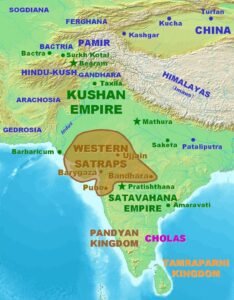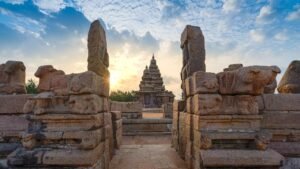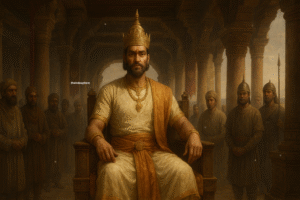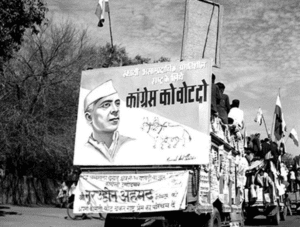
The Indian Independence Movement
The Indian Independence Movement, which culminated in the creation of the sovereign nations of India and Pakistan in 1947, was a complex, multifaceted struggle that spanned nearly two centuries. This movement was driven by a combination of economic exploitation, cultural suppression, and political subjugation under British rule. It saw the rise of numerous leaders, ideologies, and movements, all converging toward the goal of freedom. This article delves into the history of the Indian independence struggle, exploring key events, leaders, and the ultimate reasons for British withdrawal, along with the aftermath of this monumental event.
1. The Early Years: Seeds of Discontent (1600-1857)
1.1 The Arrival of the British East India Company
The British East India Company arrived in India in the early 17th century, initially for trade. However, through strategic alliances, military conquests, and exploitation of internal divisions, the Company gradually took control over large parts of India. The Battle of Plassey (1757) and the Battle of Buxar (1764) were significant in establishing British dominance, leading to the gradual erosion of the Mughal Empire and the consolidation of British power in India.
1.2 Economic Exploitation and Cultural Suppression
The British drained India’s wealth through heavy taxation, unfair trade practices, and the destruction of local industries. The once-thriving textile industry was particularly devastated. Alongside economic exploitation, the British imposed cultural and religious practices that disrespected Indian traditions. The introduction of English education and legal systems further alienated the Indian populace, sowing the seeds of discontent.
1.3 The First War of Independence (1857)
The culmination of these grievances was the Revolt of 1857, also known as the First War of Independence. Triggered by the introduction of the Enfield rifle, which required soldiers to bite cartridges rumored to be greased with cow and pig fat (offensive to Hindus and Muslims, respectively), the rebellion quickly spread across northern India. Leaders like Rani Lakshmibai of Jhansi, Tantia Tope, and Bahadur Shah Zafar played crucial roles. Although the revolt was suppressed, it marked the beginning of a nationwide struggle against British rule and led to the direct governance of India by the British Crown, replacing the East India Company in 1858.
2. The Formation of the Indian National Congress and Early Movements (1885-1914)
2.1 The Birth of Indian National Congress (1885)
The Indian National Congress (INC) was founded in 1885 by Allan Octavian Hume, along with prominent Indian leaders like Dadabhai Naoroji, Surendranath Banerjee, and Womesh Chunder Bonnerjee. Initially, the INC sought moderate reforms and greater representation for Indians in the British government. However, over time, it became the primary platform for the Indian independence movement.

2.2 The Partition of Bengal (1905)
The first major nationwide agitation led by the INC was against the partition of Bengal in 1905 by Lord Curzon. The partition, ostensibly for administrative efficiency, was widely seen as an attempt to divide and weaken the nationalist movement along religious lines. The Swadeshi Movement, which advocated the boycott of British goods and the promotion of indigenous products, emerged as a powerful form of protest. This movement also saw the rise of more radical leaders like Bal Gangadhar Tilak, Bipin Chandra Pal, and Lala Lajpat Rai, collectively known as the Lal-Bal-Pal trio.
2.3 The Rise of Revolutionary Movements
Alongside the INC’s moderate approach, revolutionary groups began to emerge, advocating for armed resistance. Organizations like the Anushilan Samiti and the Jugantar group in Bengal, led by figures like Aurobindo Ghosh and Barindra Kumar Ghosh, engaged in acts of violence against British officials. The Alipore Bomb Case (1908) was one of the most famous instances of revolutionary activity during this period.
3. The Impact of World War I and the Rise of Gandhi (1914-1920)
3.1 World War I and Its Aftermath
India contributed significantly to the British war effort during World War I, with over a million Indian soldiers serving overseas. Despite the sacrifices, the British failed to grant significant political concessions post-war, leading to widespread disillusionment. The passing of the Rowlatt Act in 1919, which allowed the British to imprison Indians without trial, further fueled anger.
3.2 The Jallianwala Bagh Massacre (1919)
The turning point came with the Jallianwala Bagh Massacre on April 13, 1919, where British troops under General Dyer opened fire on a peaceful gathering in Amritsar, killing hundreds. This atrocity shocked the nation and galvanized Indians across the country to rise against British rule.
3.3 The Emergence of Mahatma Gandhi
Mahatma Gandhi, who had returned from South Africa in 1915, emerged as the foremost leader of the Indian independence movement during this period. Gandhi’s philosophy of non-violent resistance (Satyagraha) appealed to millions and became the cornerstone of the freedom struggle. His first major campaign in India was the Non-Cooperation Movement (1920-1922), which urged Indians to boycott British institutions, goods, and services.
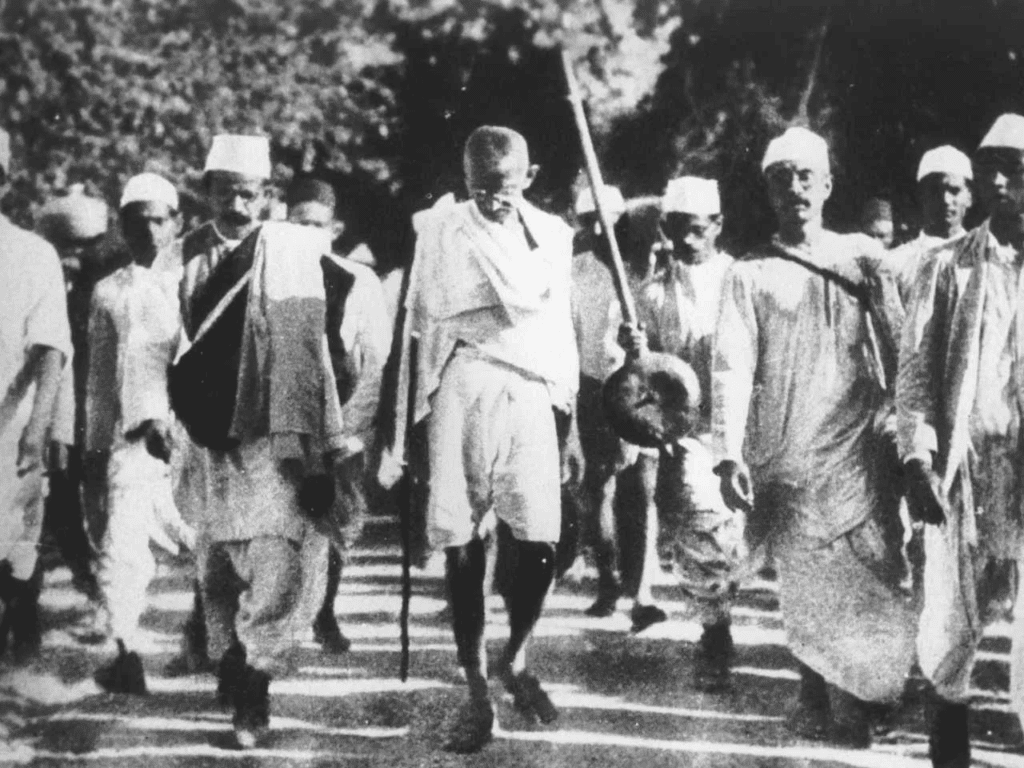
4. The Non-Cooperation Movement and the Path to Civil Disobedience (1920-1930)
4.1 The Non-Cooperation Movement
The Non-Cooperation Movement was the first mass movement led by Gandhi. It saw widespread participation from all sections of society, including peasants, workers, students, and women. The movement included boycotting British goods, institutions, and courts, and the promotion of Swadeshi (indigenous) products. Although the movement was called off by Gandhi in 1922 after the violent incident at Chauri Chaura, it marked the beginning of the mass mobilization of Indians against British rule.
4.2 The Rise of New Leaders and Ideologies
During the 1920s, new leaders emerged on the national stage. Jawaharlal Nehru, a close associate of Gandhi, began to advocate for complete independence (Purna Swaraj). Subhas Chandra Bose, another prominent leader, disagreed with Gandhi’s non-violent approach and believed in more radical means to achieve independence. Meanwhile, revolutionary activities continued, with figures like Bhagat Singh, Chandrashekhar Azad, and Rajguru engaging in acts of defiance against the British, such as the assassination of British officer J.P. Saunders in 1928 as revenge for the death of Lala Lajpat Rai.
4.3 The Civil Disobedience Movement and Salt March (1930)
Gandhi launched the Civil Disobedience Movement in 1930, with the Salt March as its most iconic act. Gandhi and his followers marched 240 miles from Sabarmati Ashram to the coastal town of Dandi to make salt, defying British laws that imposed a monopoly on salt production. The movement quickly spread across the country, with millions participating in acts of civil disobedience, such as the non-payment of taxes and the boycott of British goods.
5. The Role of Subhas Chandra Bose and the Indian National Army (INA) (1939-1945)
5.1 Subhas Chandra Bose: A Radical Approach
Subhas Chandra Bose, known as Netaji, was a key figure in the Indian independence movement who advocated for armed struggle against British rule. Disillusioned with Gandhi’s non-violent approach, Bose sought foreign assistance to free India. After a series of conflicts within the INC, Bose left the organization and eventually fled India to seek support from Axis powers during World War II.
5.2 Formation of the Indian National Army (INA)
In 1942, Bose took command of the Indian National Army (INA), initially formed by Indian POWs in Southeast Asia with Japanese support. The INA, under Bose’s leadership, fought alongside Japanese forces against the British in the Burma Campaign. Although the INA’s military efforts were ultimately unsuccessful, Bose’s actions had a profound psychological impact. His call for “Delhi Chalo” (March to Delhi) and the slogan “Give me blood, and I will give you freedom” inspired a new wave of nationalism in India.
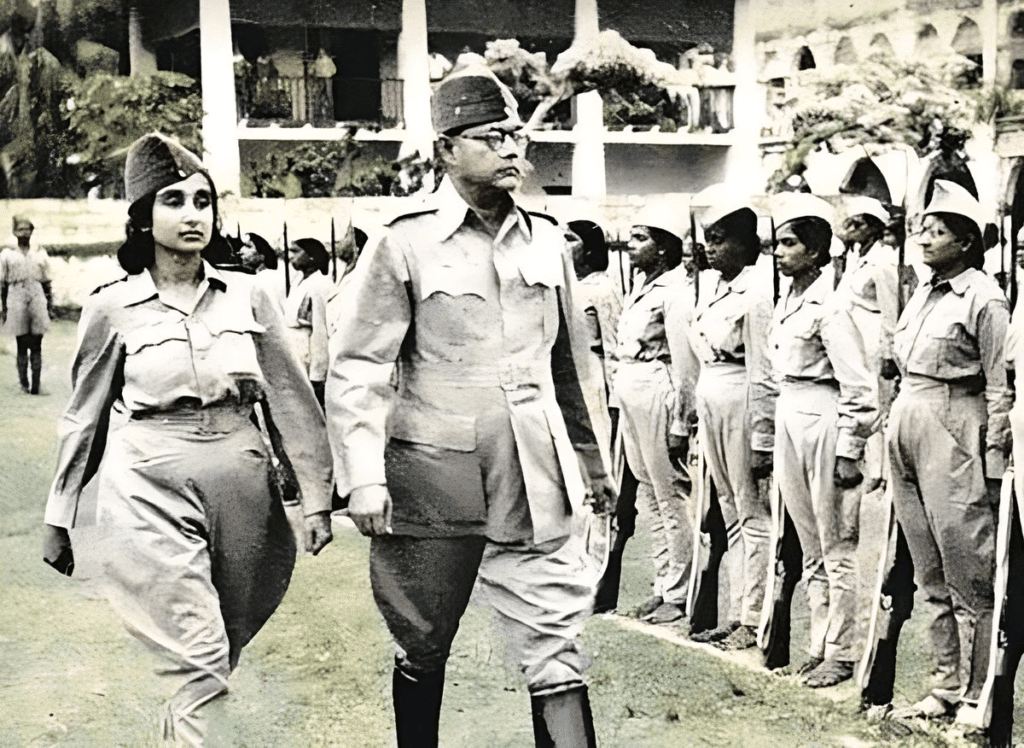
5.3 The INA Trials and Their Impact
The INA trials, held in 1945-46, were a turning point in the independence movement. The British tried several INA officers for treason, but the trials backfired as they sparked widespread protests across India, cutting across religious and regional lines. The British realized that the loyalty of the Indian armed forces could no longer be taken for granted, which contributed significantly to their decision to leave India.

6. The Role of the Indian National Congress and the Muslim League (1930-1947)
6.1 The Demand for Purna Swaraj
In 1930, the INC, under the leadership of Nehru and Gandhi, adopted the demand for complete independence (Purna Swaraj) from British rule. This marked a significant shift from earlier demands for dominion status. The demand for full independence was formally proclaimed on January 26, 1930, which was celebrated as Independence Day by the INC every year until 1947.
6.2 The Rise of the Muslim League and the Demand for Pakistan
The All India Muslim League, founded in 1906, initially sought greater political representation for Muslims within a united India. However, under the leadership of Muhammad Ali Jinnah, the League increasingly began
to advocate for a separate Muslim state, arguing that Muslims and Hindus were distinct nations. The demand for Pakistan was formally articulated in the Lahore Resolution of 1940. Jinnah’s insistence on the Two-Nation Theory became a central issue in the final years of the independence struggle.
6.3 The Quit India Movement (1942)
The Quit India Movement was launched by Gandhi on August 8, 1942, demanding an immediate end to British rule. Gandhi’s call for “Do or Die” led to widespread civil disobedience and protests across the country. The British responded with severe repression, arresting thousands of leaders, including Gandhi, Nehru, and Patel. Despite the crackdown, the movement demonstrated the unrelenting demand for independence.
7. The Role of Dr. B.R. Ambedkar and Other Significant Leaders
7.1 Dr. B.R. Ambedkar and the Fight Against Social Injustice
Dr. Bhimrao Ramji Ambedkar was a key leader in the fight against social discrimination and untouchability in India. As an eminent scholar and legal expert, Ambedkar championed the rights of the Dalits (formerly known as untouchables) and worked tirelessly to ensure their inclusion in the political and social fabric of India. He was instrumental in drafting the Indian Constitution, which enshrined the principles of equality, justice, and non-discrimination.
7.2 Veer Savarkar and the Hindutva Ideology
Vinayak Damodar Savarkar, popularly known as Veer Savarkar, was a prominent revolutionary and the intellectual father of the Hindutva ideology. He advocated for armed resistance against British rule and was associated with the revolutionary activities of the Abhinav Bharat Society. Savarkar’s ideas on Hindutva influenced a significant section of the Indian nationalist movement, emphasizing the cultural and religious identity of Hindus as central to the nation.
7.3 Other Significant Leaders and Freedom Fighters
The Indian independence movement was marked by the contributions of numerous other leaders and freedom fighters, including:
- Sardar Vallabhbhai Patel: Known as the “Iron Man of India,” Patel played a crucial role in the integration of princely states into independent India.
- Maulana Abul Kalam Azad: A prominent leader of the INC and the first Minister of Education in independent India, Azad was a strong advocate of Hindu-Muslim unity.
- Gopal Krishna Gokhale: A moderate leader and mentor to Gandhi, Gokhale advocated for gradual reforms and constitutional means to achieve self-rule.
- Annie Besant: A British theosophist who played a significant role in the Home Rule Movement, advocating for self-governance.
- Sarojini Naidu: Known as the “Nightingale of India,” she was a poet and a key leader in the INC, actively involved in the Civil Disobedience Movement.
- C. Rajagopalachari: The last Governor-General of India and a close associate of Gandhi, Rajaji was instrumental in the freedom struggle and post-independence politics.
- Bhagat Singh, Rajguru, and Sukhdev: Revolutionary martyrs who became national icons after their execution for their involvement in the Lahore Conspiracy Case.
- Jatindra Nath Das: A revolutionary who died after a 63-day hunger strike in jail, protesting against the treatment of political prisoners.
- Chittaranjan Das: A leader of the Swaraj Party and an advocate for self-rule, who also defended many revolutionaries in court.
- Madan Lal Dhingra: A revolutionary who assassinated a British official in London as a protest against colonial rule.
8. The British Decision to Grant Independence and the Role of World War II (1945-1947)
8.1 The Weakening of British Power Post-World War II
World War II significantly weakened Britain both economically and militarily. The war effort had drained British resources, and there was growing pressure from the United States and the Soviet Union for Britain to decolonize. Additionally, the war had galvanized Indian nationalism, with many soldiers returning home with a renewed sense of the need for freedom.
8.2 The Role of the Labour Government
The Labour Party, which came to power in Britain in 1945, was more sympathetic to Indian aspirations than the previous Conservative government. Clement Attlee, the Prime Minister, and his government were keen to resolve the Indian issue and focus on post-war reconstruction in Britain.
8.3 The Impact of the Naval Mutiny (1946)
The Royal Indian Navy Mutiny in 1946, which saw widespread unrest among Indian sailors, further alarmed the British. The mutiny was supported by widespread strikes and demonstrations across India, showing that the British no longer had the control they once had over the Indian population.
8.4 The Decision to Partition India
The increasing communal tensions between Hindus and Muslims, exacerbated by the Muslim League’s demand for Pakistan, convinced the British that a partition was necessary. The inability of the INC and the Muslim League to reach a compromise led to the British decision to partition India. Lord Mountbatten, the last Viceroy of India, expedited the process, and the Indian Independence Act was passed in July 1947, leading to the creation of India and Pakistan on August 15, 1947.
9. The Aftermath of Independence: Partition, Refugees, and Nation-Building
9.1 The Human Tragedy of Partition
The partition of India led to one of the largest and most tragic migrations in human history. An estimated 10 to 15 million people were displaced as Hindus, Muslims, and Sikhs crossed the newly drawn borders to join their respective nations. The partition was marked by horrific communal violence, with estimates of the death toll ranging from several hundred thousand to over a million. The newly independent governments of India and Pakistan struggled to deal with the massive influx of refugees and the breakdown of law and order.
9.2 The Integration of Princely States
Sardar Vallabhbhai Patel, as the first Deputy Prime Minister and Home Minister of India, played a critical role in integrating the princely states into the Indian Union. Through diplomacy, and in some cases, military action, Patel ensured that nearly 565 princely states acceded to India, thus preserving the territorial integrity of the new nation.
9.3 The Constitution and Nation-Building
Dr. B.R. Ambedkar, as the Chairman of the Drafting Committee, was instrumental in framing the Indian Constitution, which was adopted on January 26, 1950. The Constitution laid the foundation for India’s democracy, ensuring equality, justice, and freedom for all citizens. The early years of independence were marked by efforts to build a new nation from the ruins of colonialism, focusing on economic development, social justice, and national unity.
9.4 The Impact on Neighbouring Regions
The creation of Pakistan, and later Bangladesh in 1971, had a profound impact on South Asia. The partition left a legacy of unresolved disputes, particularly over the region of Kashmir, which continues to be a flashpoint between India and Pakistan.
10. The Legacy of the Indian Independence Movement
The Indian Independence Movement not only led to the birth of two sovereign nations but also inspired anti-colonial movements across Asia, Africa, and Latin America. The struggle was characterized by the diversity of its leaders and movements, from the non-violent philosophy of Gandhi to the armed resistance led by Bose and other revolutionaries. The movement’s legacy is evident in India’s commitment to democracy, secularism, and social justice. However, the scars of partition and the challenges of nation-building continue to shape the subcontinent.
The story of India’s independence is a testament to the power of collective action, the resilience of a people determined to be free, and the complexity of the historical forces that shape nations. As India and Pakistan continue to evolve, the lessons of their shared history remain relevant, reminding us of the enduring quest for justice, freedom, and peace.

